Teamcenter data classification: ECLASS standard
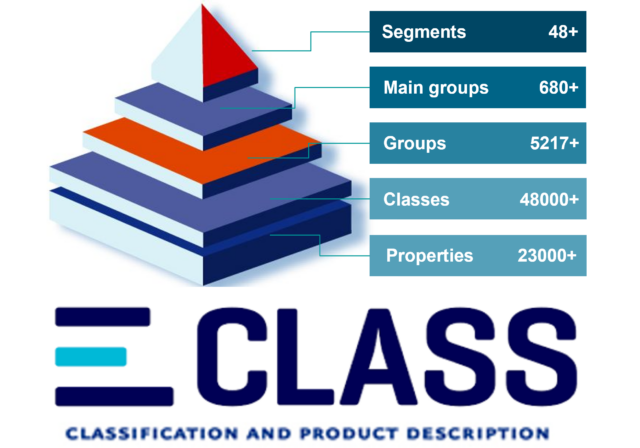
The Teamcenter solution for data classification supports ECLASS Standard!
In 2019, Teamcenter became the first major PLM provider to integrate ECLASS Standard within its core PLM system, marking a significant milestone in our ongoing commitment to innovation and customer satisfaction.
New Teamcenter Advanced Classification engine
Traditionally, Teamcenter Basic Classification technology has been based on DIN 4000 Standard constructs. The generic approach taken to classify just about anything has served us well. With the advent of new technology, we are delivering a new way to effectively capture and present classification data in our Advanced Classification system with the intuitive usability of the Active Workspace client.
Our goal is to protect customer investment in the re-use processes while moving to a new classification engine that preserves the key existing concepts.
Hence Basic Classification and Advanced Classification systems co-exist seamlessly without any need to change existing business processes. Customers are advised to use Basic and Advanced Classification in a mixed mode in the interim (no licensing impact) as they progressively switch to Advanced Classification completely – no Big-bang approach needed.
As the name suggests, Advanced Classification offers advanced data modelling capabilities to capture product data holistically. Just like Basic Classification, Advanced Classification is designed as a generic data classification system giving choice to the customer to align their business processes. Customers can configure desired taxonomy to meet business needs or migrate existing Basic Classification data. If the customer desires to align with the Classification Standards, then Advanced Classification also supports prominent data classification standards like ECLASS. ECLASS classification conforms to underlying ISO, IEC and DIN Standards. It allows you to provide customers with high-quality data seamlessly flowing in upstream and downstream integrated systems.
Introducing ECLASS data management, powered by Teamcenter Advanced Classification
Since Spring 2019, Teamcenter for ECLASS Data Management can be easily adopted by customers, because all data classification systems will co-exist. Teamcenter for ECLASS Data Management is a separately licensed product that manages data in ECLASS Advanced taxonomy and class definitions in Advanced Classification system. Since the new ECLASS solution leverages the Active Workspace client, users will appreciate the best in the class intuitive usability and flexibility, which help customers quickly adopt the ECLASS constructs and taxonomy.
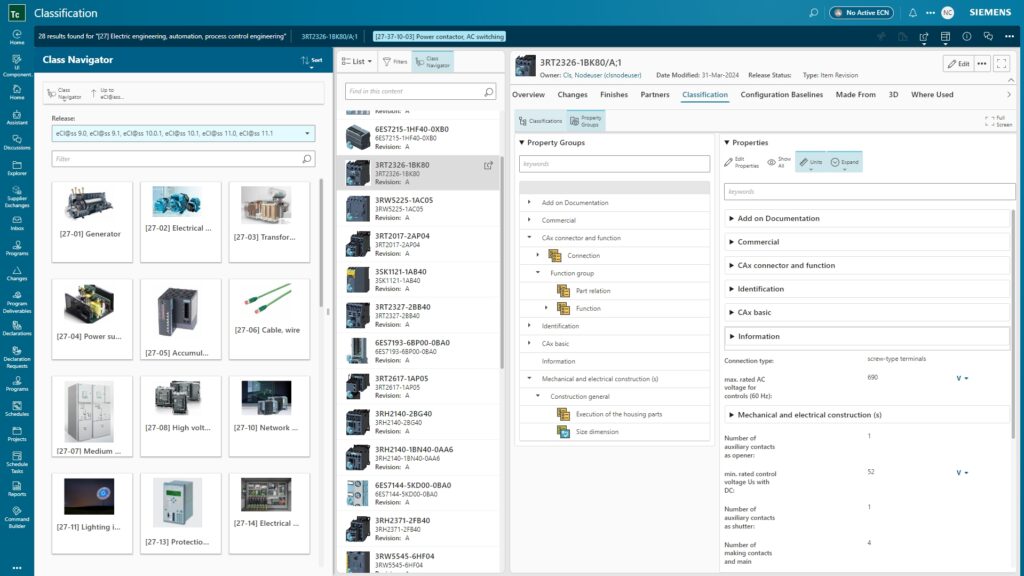
The goal of the ECLASS support in Teamcenter is to allow customers to leverage standard taxonomy and implement the data model support to leverage the class and property definitions. By using ECLASS in communications with customers and suppliers, Teamcenter ensures that all the involved speak the same language. This reduces customer costs through economical and efficient integration of our product data into customer SCM and CRM systems.
Teamcenter for ECLASS Data Management is an enabler for implementing Industry 4.0 in solutions, products, and systems to realize the digital twin.
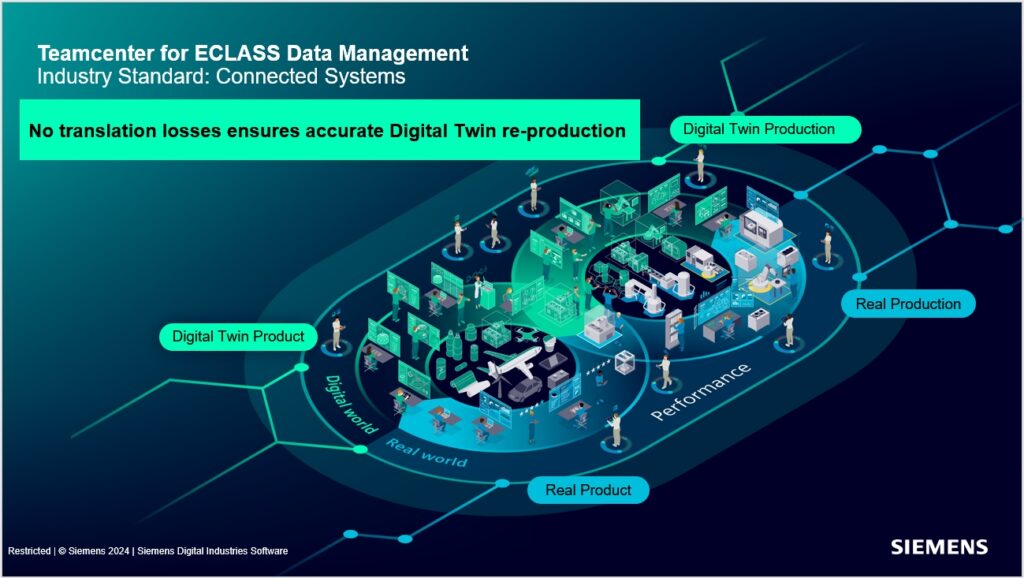
Bringing together the worldwide reference-data standard with the world’s leading PLM
A bit of a history
The ECLASS organization was founded by 12 large German companies (Including Siemens, BASF, AUDI/VW, SAP, Bayer, and others). The aim of the organization is a simplification of the electronic, cross-industry trade through standardized product descriptions.
ECLASS has established itself internationally over 20 years as the only ISO/IEC-compliant industry standard and is thus the worldwide reference-data standard for data classification and unambiguous description of products and services.
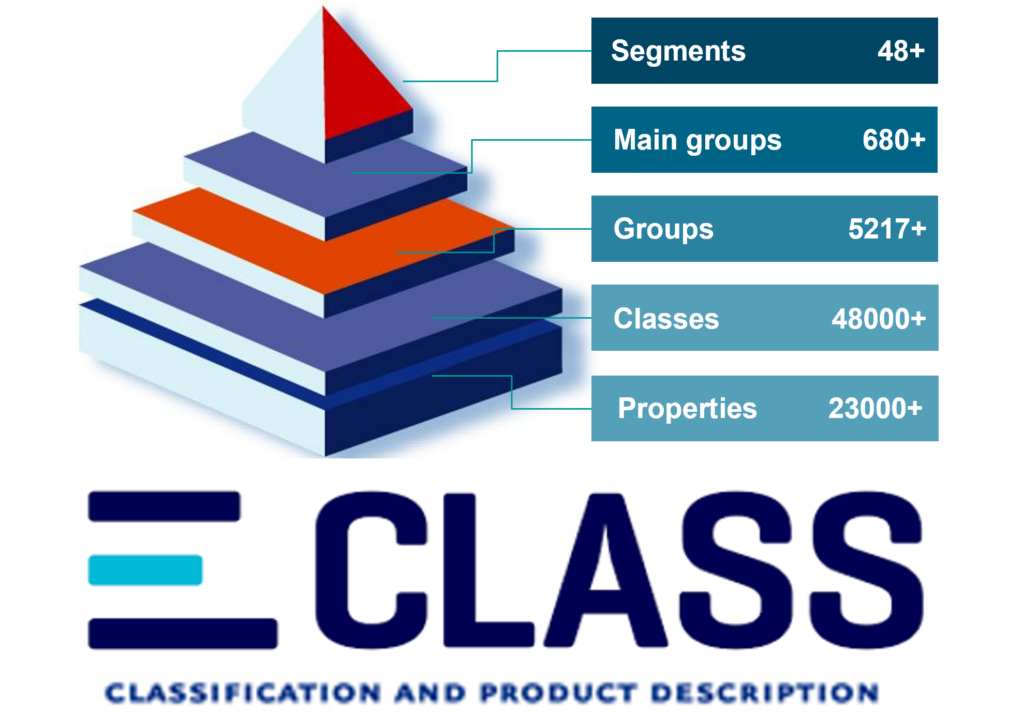
ECLASS data classification standard
The current ECLASS version spans across 48 segments, over 48,000 product classes and over 23,000 uniquely described properties. We believe ECLASS has a strong presence in EU and is fast spreading in China, Japan, and North America as a master standard where product master data can be exchanged digitally across all borders – across sectors, countries, languages, and organizations. As a simple, machine-readable, one-to-one, ISO-compliant, and yet open system, the ECLASS standard is growing faster than all others. ECLASS is built on the world’s expert knowledge with active participation from customers to report changes and enhancements. Currently, ECLASS is used in about 3,500 companies both nationally and internationally.
ECLASS collaborates with the major data classification standards such as PROLIST, ETIM, proficl@ss, JEITA, JEDEC, IMT, EDMA, eCALS, CECED/PI, OPC UA and IDTA. ECLASS also offers interoperability and out-of-the-box mappings with classification Standards like UNSPSC, GPC and CPV.
ECLASS consists of a four-level hierarchy of data classification classes. The 4-layer class structure is associated with the application classes (AC) containing all relevant structural elements such as Blocks, Aspects, Cardinality, and Polymorphism. The fourth level, the commodity class or product group is then further described with the help of properties and property values. Properties and values form the basis for the product description.
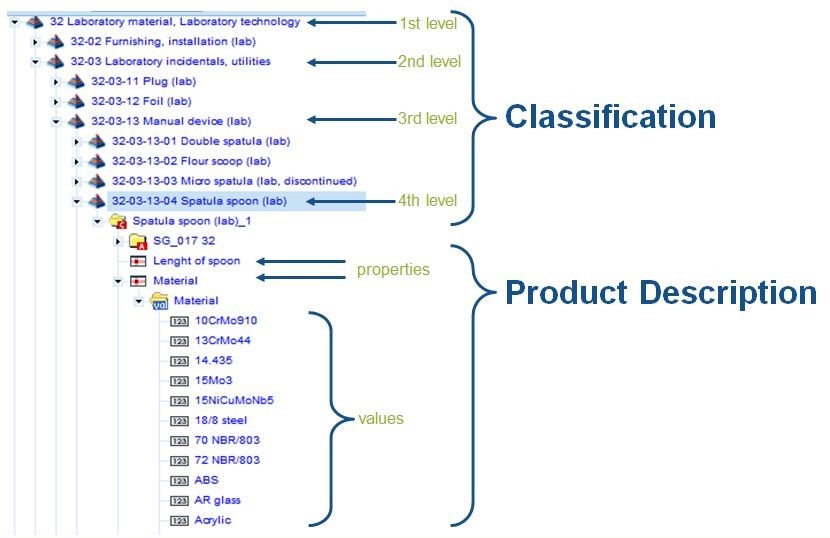
Blocks
The grouping of various properties under one name. Using a block, the properties of one class — especially if there is a large number of them — can be grouped and organized. This makes it easier, for instance, to search for and reuse properties.
Aspects
An aspect is a special variation of a block that is found in the top level of a class. It describes non-product-specific properties of a class from certain perspectives. The “manufacturer” aspect of a motor vehicle, for example, covers properties such as make, manufacturer’s product number, and model. These properties depend directly on the manufacturer and are not subject to any product-specific restriction. This means that this aspect can be used universally with any other class in order to collect manufacturer data.

Cardinality
Defines the attribute of being able to use a block with different property values multiple times in a class. Cardinality expresses how often a block with different property features (values) is assigned to the respective class.
In our “motor vehicle” example, cardinality can be used in describing the doors. The doors are described using the properties of “color”, “type”, and “power window”. These properties are consolidated in a “door properties” block and can be invoked as often as you wish through the “number of doors” reference property.
The properties are filled in as follows:
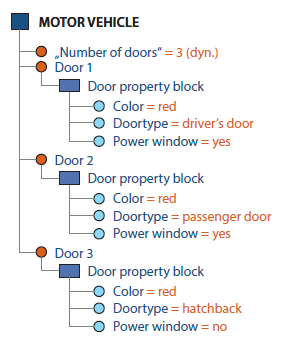
Polymorphism
Often, the content that a block requires within a class is not determined in advance. For this reason, polymorphism offers the option to decide dynamically when assigning values to properties in which specific block content is required. From a data standpoint, which block from a series of blocks is used is determined only at this point.
In the “motor vehicle” example, you can use polymorphism to describe the door type. The properties of the driver’s door and hatchback are then assigned differently:
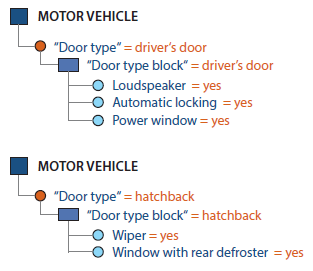
Watch for more information on ECLASS Standard and how it can potentially benefit the customers.
No matter how you choose to deploy Teamcenter,
you get the same proven solutions designed to help you innovate faster.



Comments
Comments are closed.